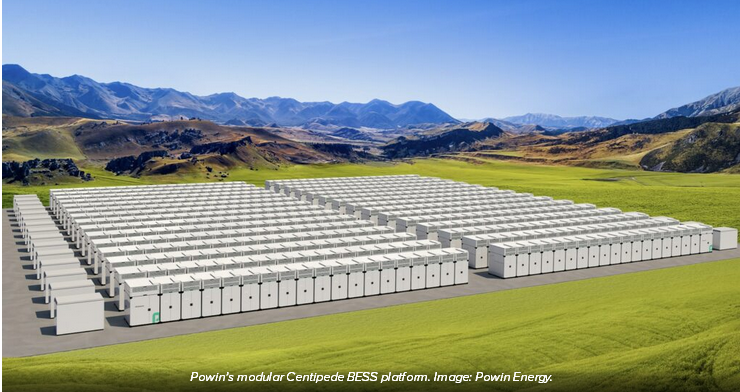California needs 40GW of battery storage to meet decarbonization goals
California
investor-owned utility San Diego Gas & Electric (SDG&E) has
released a decarbonization roadmap study. The report claims that
California needs to quadruple the installed capacity of the various
energy generation facilities it deploys from 85GW in 2020 to 356GW in
2045.

The
company released the study, "The Road to Net Zero: California's Roadmap
to Decarbonization," with recommendations designed to help achieve the
state's goal of becoming carbon neutral by 2045.
To achieve
this, California will need to deploy lithium-ion battery energy storage
systems with a total installed capacity of 40GW, as well as 20GW of
green hydrogen generation facilities to dispatch electricity, the
company added. According to the latest monthly statistics released by
the California Independent System Operator (CAISO) in March, the state
had about 2,728MW of energy storage systems connected to the grid in
March, but no green hydrogen generation facilities.
In addition
to electrification in sectors such as transportation and buildings,
power reliability is an important part of California's green
transition, the report said. The San Diego Gas & Electric
(SDG&E) study was the first to incorporate reliability standards
for the utility industry.
The Boston Consulting Group, Black
& Veatch, and UC San Diego professor David G. Victor provided
technical support for the research conducted by San Diego Gas and
Electric (SDG&E).
The report states that to achieve the
goals, California needs to accelerate the decarbonization process over
the past decade by 4.5 times, and the installed capacity of the
deployment of various energy generation facilities needs to quadruple,
from 85GW in 2020 to 356GW in 2045, half of which is Solar power
generation facilities.
That number differs slightly from data
recently released by the California Independent System Operator
(CAISO). The California Independent System Operator (CAISO) said in its
report that 37 GW of battery storage and 4 GW of long-duration storage
would need to be deployed by 2045 to meet its goals. Other data
released earlier indicated that the installed capacity of long-term
energy storage systems that need to be deployed will reach 55GW.
However,
only 2.5GW of energy storage systems are located in the San Diego Gas
& Electric (SDG&E) service area, and the mid-2030 target is only
1.5GW. At the end of 2020, that figure was only 331MW, including
utilities and third parties.
According to a study by San Diego
Gas & Electric (SDG&E), the company (and the California
Independent System Operator (CAISO) each have 10 percent of the
installed renewable energy capacity that needs to be deployed by 2045)
%above.
San Diego Gas & Electric (SDG&E) estimates that
California's demand for green hydrogen will reach 6.5 million tons by
2045, 80 percent of which will be used to improve the reliability of
the power supply.
The report also said that substantial
investment in the region's power infrastructure is needed to support
higher power capacity. In its modeling, California will import 34GW of
renewable energy from other states, and the interconnected grid in the
western United States is critical to ensuring the long-term reliability
of California's power system.
SES Power believes that these
reports do not have a very deep understanding of the impact of current
raw material fluctuations and the epidemic on clean energy. We expect
that the key components of photovoltaic power generation and battery
energy storage systems, such as photovoltaic panels, lithium batteries,
inverters, hardware, etc., will enter a long cycle of price increases.
There are many reasons. Developers will not do business at a loss
unless the government has very good policies to promote it. The
simplest reality is that we use EVE, CATL, BYD square aluminum-shell
lithium iron phosphate batteries (single 100Ah-280Ah) products, special
lithium iron phosphate batteries that can work at -40 degrees Celsius,
even if we have worked hard to control lithium The cost of the
battery, but the magnitude of the price increase still makes our end
customers hesitant. We have reason to believe that this will also
happen to system integrators or clean energy developers.



































